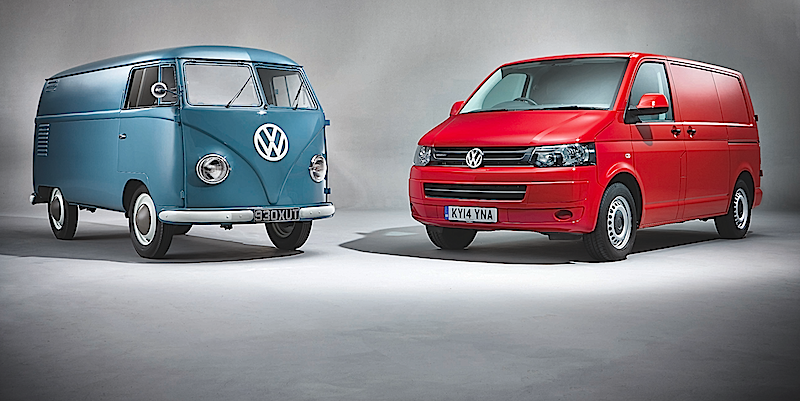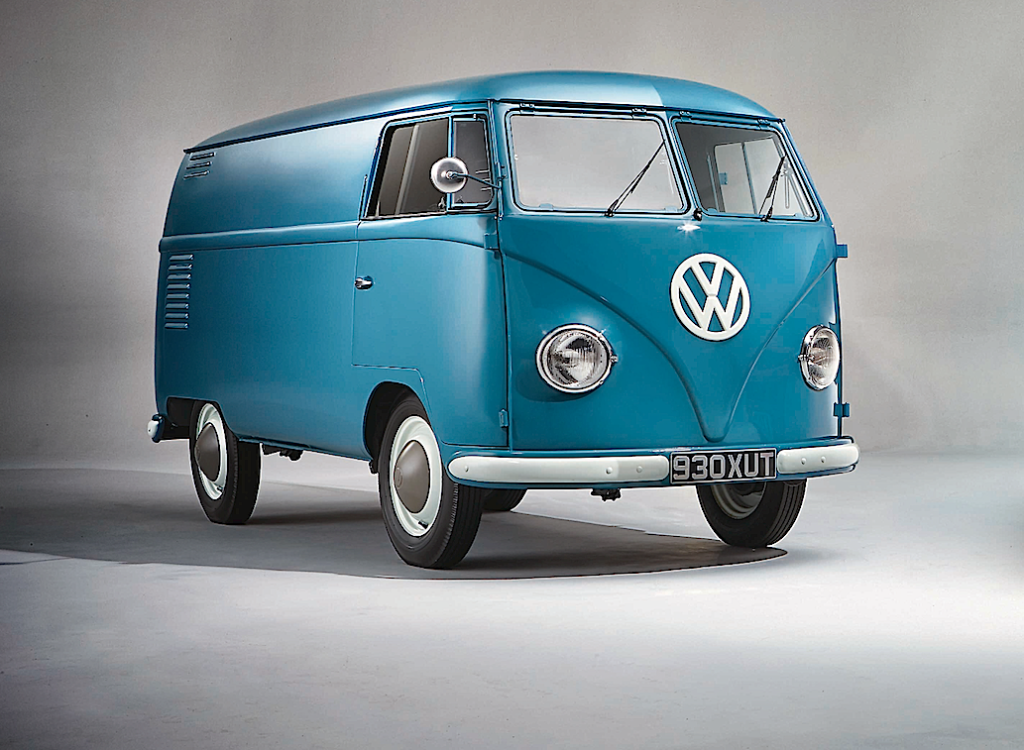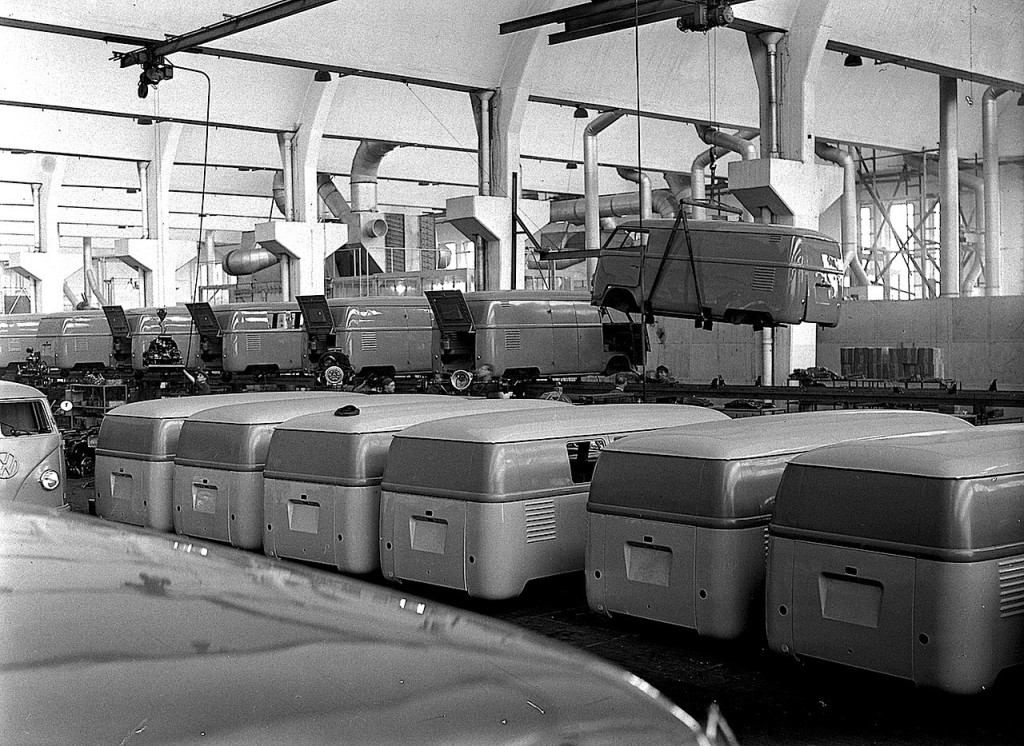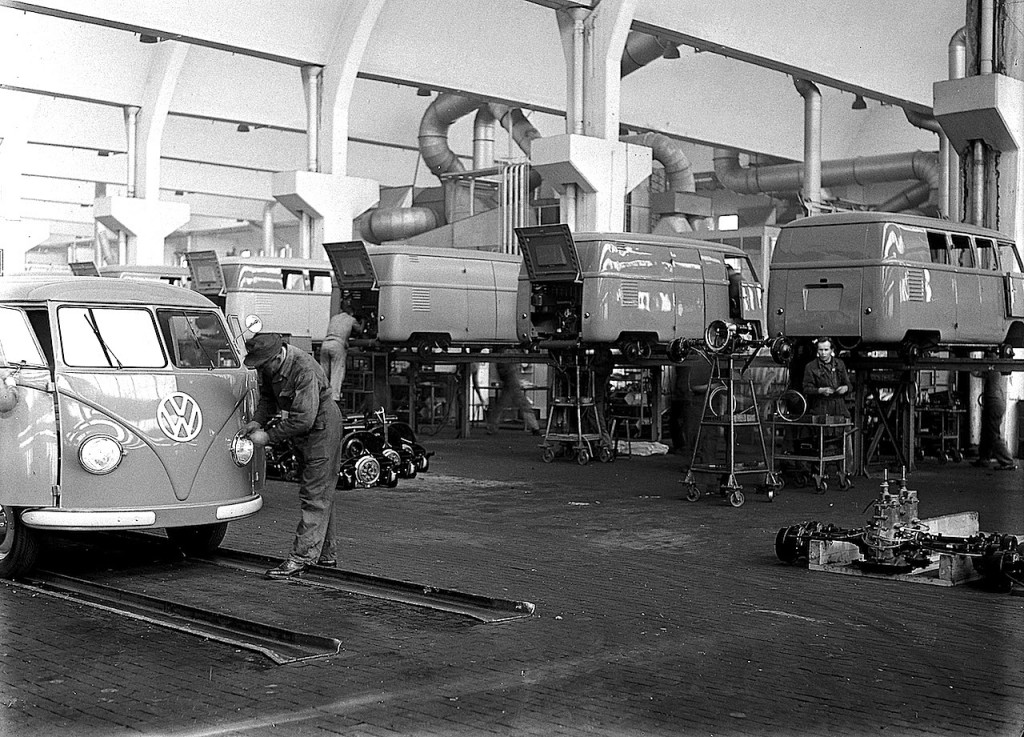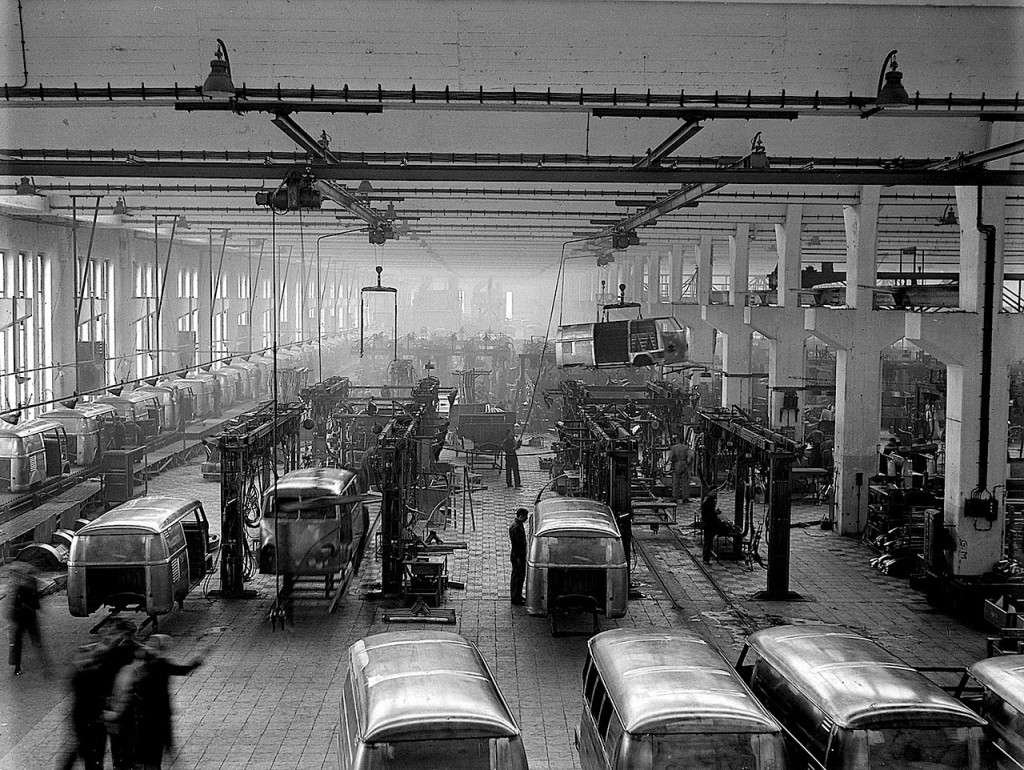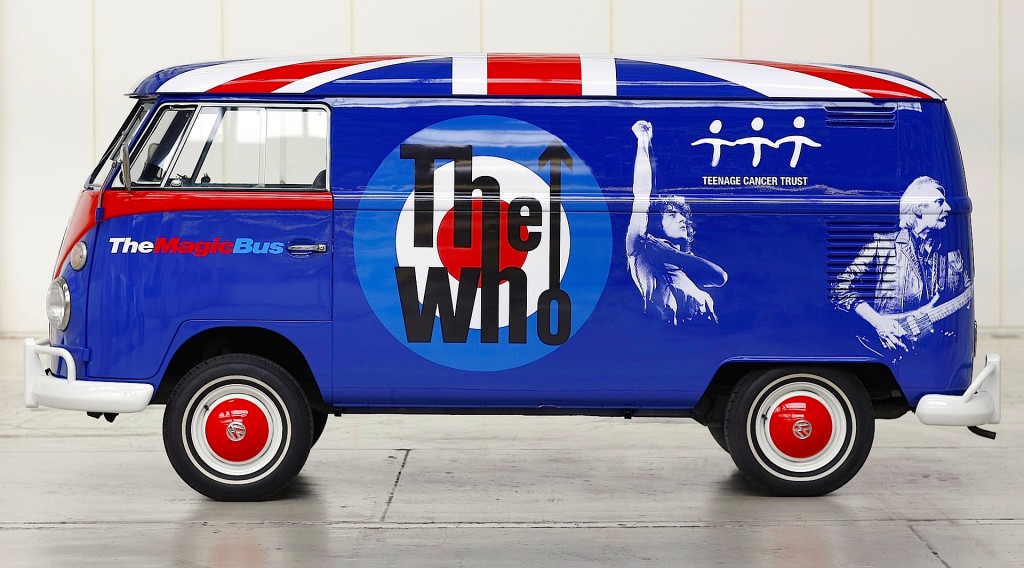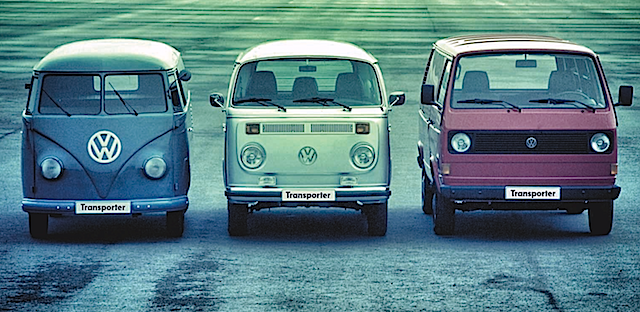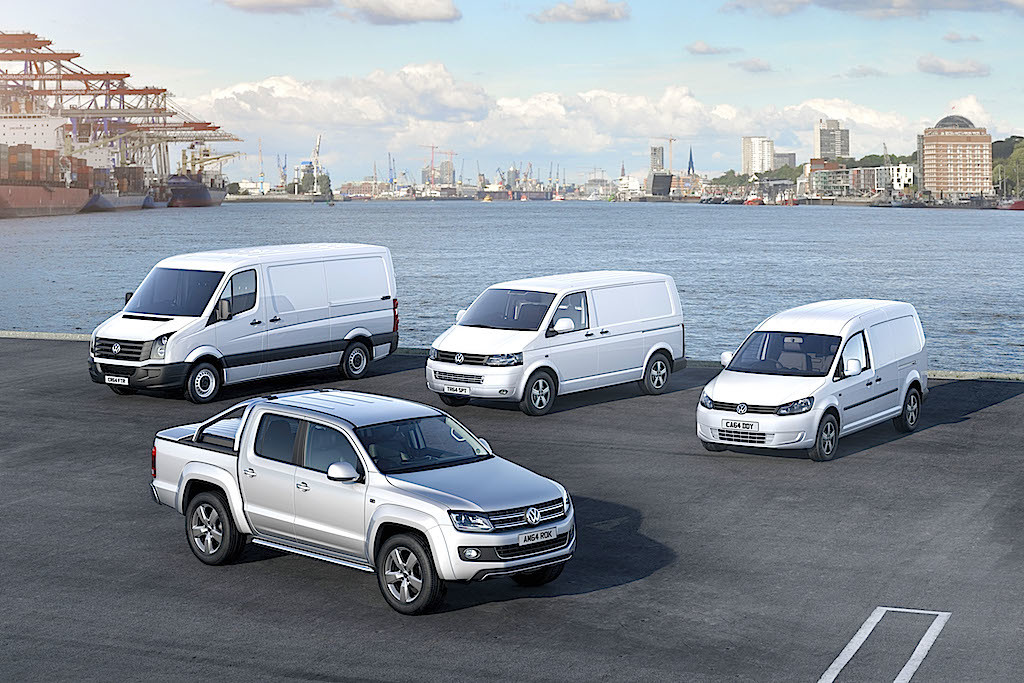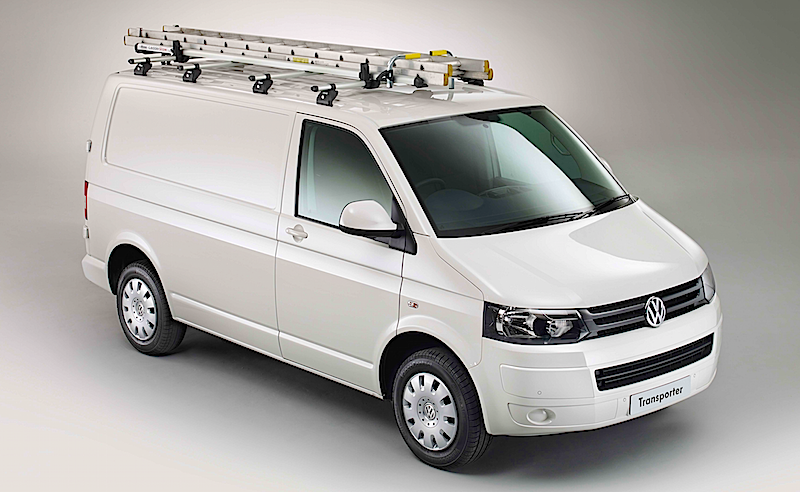By Steve & Tamami Laser
Sixty-five years ago, Volkswagen began production of the Transporter, also known as “Bulli.” From its humble beginnings, the rear-engine van went on to become legendary for its instantly recognizable design, variety of configurations including the “bus,” kombi, pickup and camper, and the cool factor that continues to make it a popular collectible today.
Let’s journey back to the beginning as VW tells the tale and then fast-forward to the present lineup of VW Commercial Vehicles…and ponder why they’re not sold in the U.S. market. Volkswagen says the first Bulli models were built in Wolfsburg before production started at a new facility in Hanover in 1956.
The idea for a load-carrying vehicle based on a Beetle platform came from Major Ivan Hirst, a senior British army officer placed in charge of re-commissioning the post-war Volkswagen factory. He ordered the creation of a flat-bed truck – dubbed the Plattenwagen – to move parts around the factory. The innovative truck soon caught the eye of visiting Dutch importer Ben Pon in the mid-1940s, who proposed the idea of a more developed panel van version.
Two years later, Volkswagen Plant Manager, Heinrich Nordhoff, presented four prototypes: two panel vans, a kombi and a small bus. Nordhoff promised that the Transporter would be as uncompromising and robust as the Beetle: “These vehicles won’t be handled with kid gloves, rather they will be treated roughly.”
Designers used the engine and axles of the Beetle. Instead of a central tubular frame of the popular family car, the bus had a unitized body that was mounted on a ladder frame. The 1.1-liter engine produced 18 kW (24.5PS) at 3300 rpm. The bus could transport up to eight people and the two rear seat rows could be removed easily to free up load space for around 750 kg of payload.
Production began on March 8, 1950, in Hall 1 of the Volkswagen plant in Wolfsburg, and ten vehicles were manufactured per day.
By the end of 1950, 8001 Transporters had been built. Demand was strong, especially since its affordable price made it an attractive option for tradesmen and retail businesses. The unique vehicle quickly became an export hit as well. Volkswagen buses could transport just about anything: rubble and debris, mortar and building stones, breakfast rolls and beeswax, cigars and newspapers.
A Volkswagen bus with a camping box made its appearance in 1951 at the Automobile Exhibition in Berlin. The delivery van with a rear engine suddenly held the promise of an entirely different type of travel. For the first time, it travelled over the Alps. Later, it was driven to India when “hippies” discovered the ‘Bulli’ for themselves.
Four years after its production launch, the 100,000th Volkswagen Transporter came off the assembly line in Wolfsburg in 1954. By this point, there were 30 different models of the vehicle. Daily production in Wolfsburg was at 80 vehicles but it couldn’t produce more because the plant was already filled to capacity with Beetle production. It became clear that the Transporter needed its own plant.
Construction work began in early March 1955 in Hannover-Stöcken, and the plant was built from the ground up in just one year. In March 1956, the first “Made in Stöcken” Transporters come off the assembly line. This was the beginning of a future symbol of the “economic wonder years.”
Today, a total of 11 million T-series vehicles spanning five generations have been produced worldwide.
VW says production of the new generation model, the T6, launches this year. Along with the T-series, the Hannover-Stöcken plant also produces the Amarok pick up. The California recreational vehicle is built not far away in Limmer.
The Poznan plant in Poland produces the Transporter and the Caddy, and another plant is being built in nearby, Wrzesnia for the new Crafter.
So why aren’t these new generation Volkswagen Commercial Vehicles sold in America? That’s a good question that only VW can answer. The Mercedes-Benz Sprinter along with Ford’s Transit Connect proved that the market exists for working Euro vans of all sizes. And both companies overcame the tariff on imported trucks.
News source and photos courtesy of Volkswagen U.K. and Volkswagen AG
Story (commentary) © 2015 CarNichiWa.com
